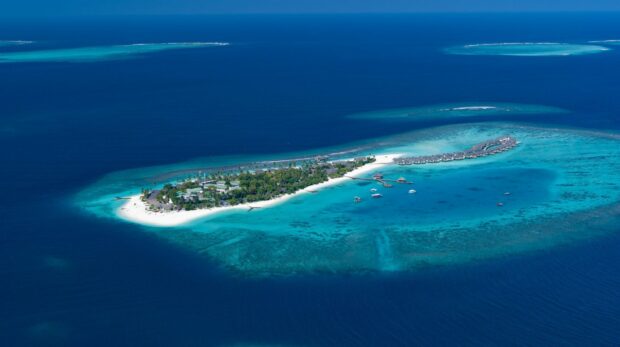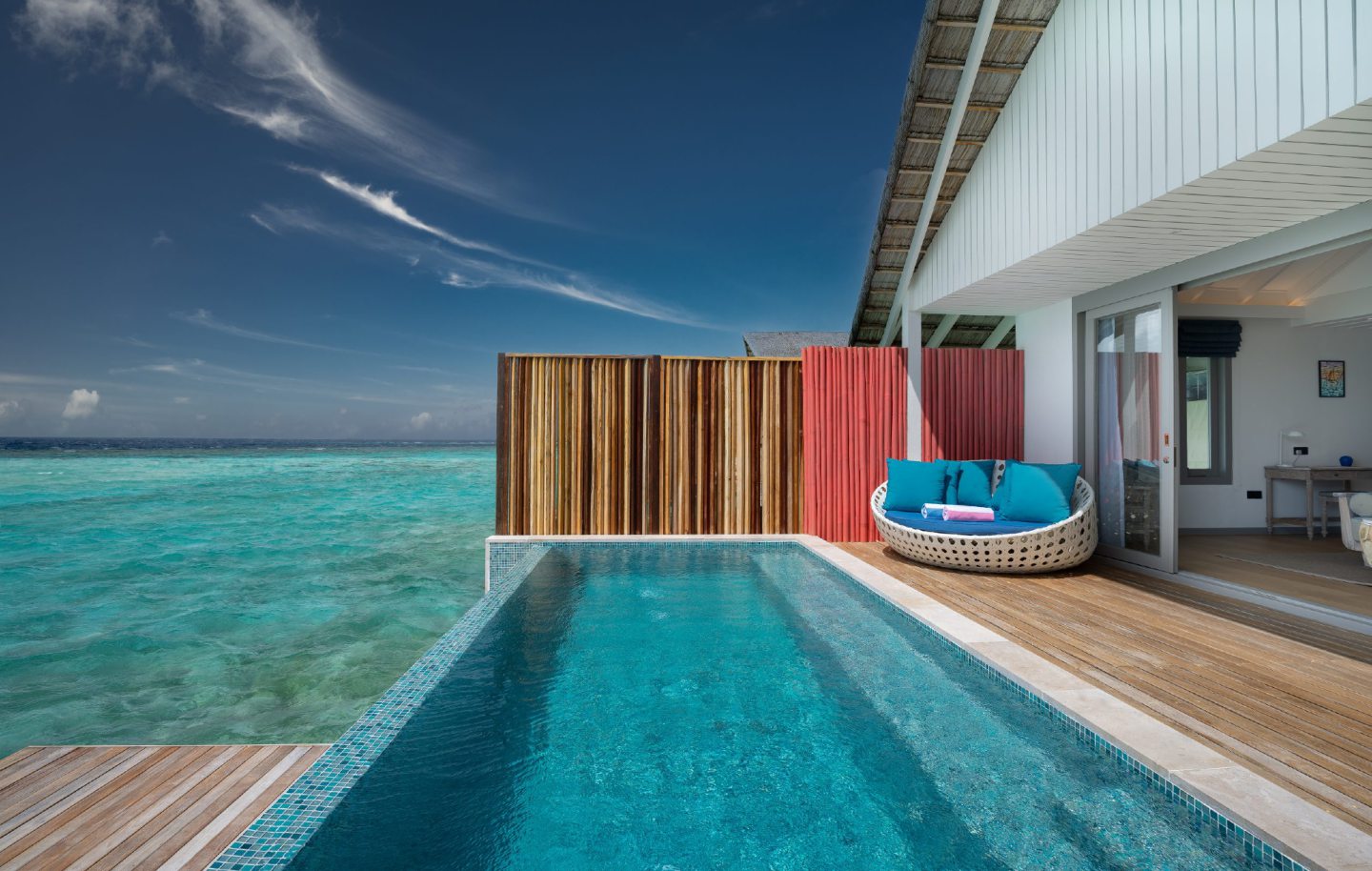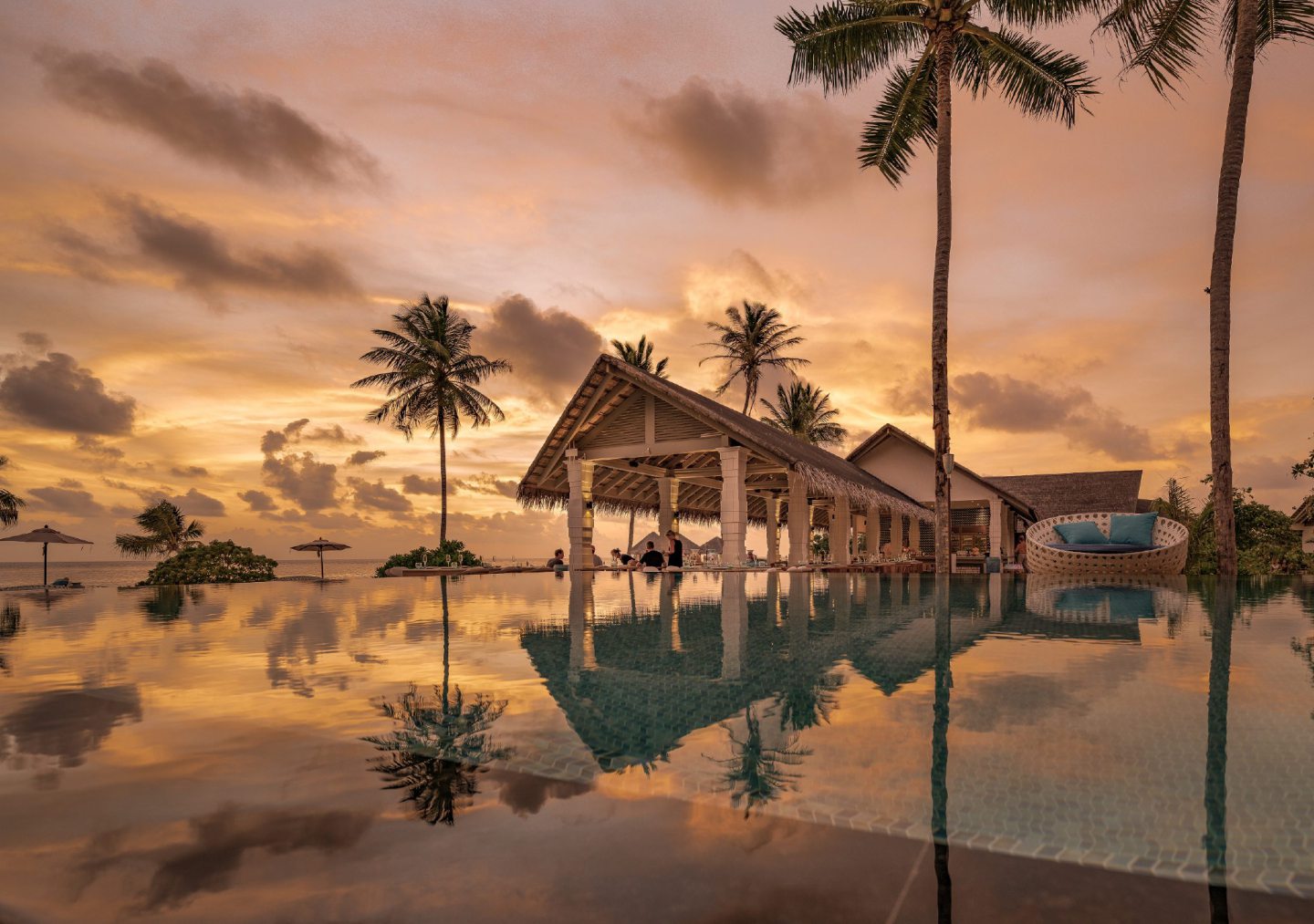
From the moment we are welcomed in Malé, the capital of the Maldives, by a seaplane captain wearing a pair of flip-flops, we know we are somewhere seriously laid-back.
As the be-flip-flopped pilot expertly lands our seaplane 45 minutes later on the pancake-flat bay next to Cora Cora, we are greeted by a sight to gladden the heart of any Brit who has endured a dour and drizzly Covid lockdown.
Sea and skies of a crystalline blue? Check.
Beaches shining whiter than a tennis pro’s shirt at Wimbledon? Check.
Gorgeous palm-thatched, overwater villas with a flight of steps leading from the back door into the calming waters? Check.
An Instagram-friendly set of swings on a photogenic sandbank 20 yards out to sea? Check.
Divine, car-free, get-away-from-it-all tranquillity wherever you turn? Check.
You can, of course, come to Cora Cora, which opened in October, and simply put your feet up. But the resort on the Raa Atoll offers much, much more than sun, sea and sand.
At Cora Cora, which has a hundred villas, you can, for instance, learn how to paint with a local artist or take a music lesson from a Maldivian guitarist. You can also make your own bath bombs or fragrant candles.
You can do watersports at any five-star Indian Ocean beach resort, but these sorts of activities leap out as completely different. They provide just one reason why Cora Cora stands out from the other 157 resorts in the Maldives.
Another point of difference is the only museum in the country, apart from the National Museum in Malé. This underlines that Cora Cora is as much about culture as sun cream.
The felicitously entitled “Dutch Onion Museum” is named after the onion-shaped, green-glass, personal wine bottles given to sailors working for the Dutch East India Company during that organisation’s dominance of the area in the 17th Century.
A pair of these bottles – discovered in 2013 where Cora Cora now stands – take pride of place in the museum.
Among the more than 60 other items unearthed on the island is a collection of Chinese porcelain from the Kangxi Dynasty (1662-1722). Intrepid Chinese traders used to barter these for fresh water with the locals on Maamigili, as the island was called before becoming a luxury resort.
The island also boasts an open-air museum displaying the excavated ruins of an ancient mosque and two sandstone bathing tanks dating from 500 BC.
Cora Cora also offers a fascinating trip to see a more recent slice of Maldivian history. A short journey across the water in an elegant wooden dhoni boat takes you to a kilometre-square “ghost island” called Kandholhudoo.
This was destroyed by the tsunami that hit the region on Boxing Day 2004. The visit is very sobering.
All the buildings on the island, once home to 3,500 people, were wiped out as it was engulfed by two gigantic waves. Two people died on the day and the rest of the inhabitants were made homeless.

Over the past 18 years, Kandholhudoo has been reclaimed by nature. For instance, a large tree is growing out of the second-floor maternity ward of what used to be the health centre.
As we are shown round by Abdullah, who was a 13-year-old schoolboy on the island when the tsunami crashed through his home, and Fau, we see many poignant reminders of the island’s vibrant past.
In a moment of quiet contemplation amongst the shattered glass in a wrecked mosque, Fau tells me why he thinks these tourist visits are so important. “It is vital to show the world what happened here. If we don’t stop global warming, something worse will happen and the Maldives will disappear.”
As you leave Cora Cora to board the seaplane operated by Flip-Flop Flights and return to Male, you pass a traditional Maldivian Tree of Wishes. Here you can write down your wish and tie it to a branch.
What would my wish be?
I wish to return to Cora Cora as soon as possible. Please!
P.S.
Food and drink at Cora Cora, which is all free under the “premium all-inclusive” plan, is delicious.
And you can take your pick from four different restaurants – Italian, Japanese, pan-Asian and a “Spice Route” eaterie. The tiramisu at the Italian restaurant, Acquapazza, is worth travelling all the way from Rome for.
Factfile:
Cora Cora Maldives costs from £600 per night, based on two sharing a beach villa on the premium all-inclusive plan.

Enjoy the convenience of having The Sunday Post delivered as a digital ePaper straight to your smartphone, tablet or computer.
Subscribe for only £5.49 a month and enjoy all the benefits of the printed paper as a digital replica.
Subscribe © SYSTEM
© SYSTEM